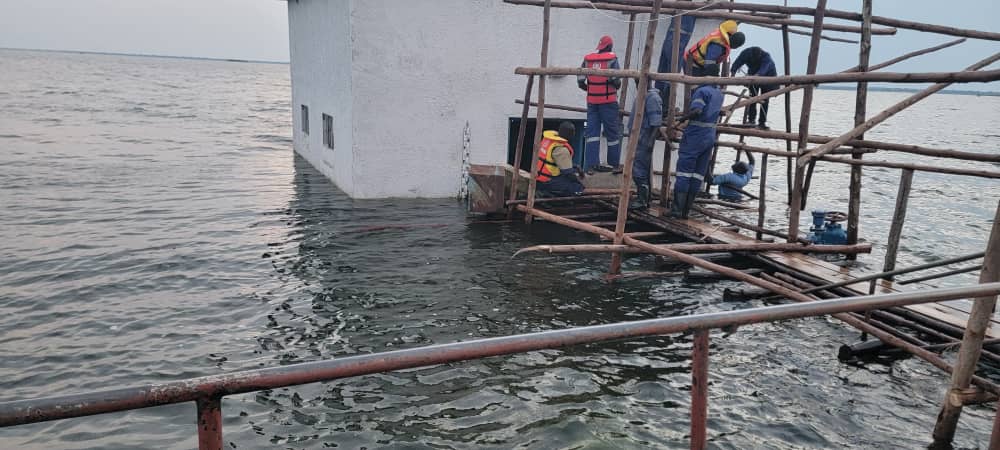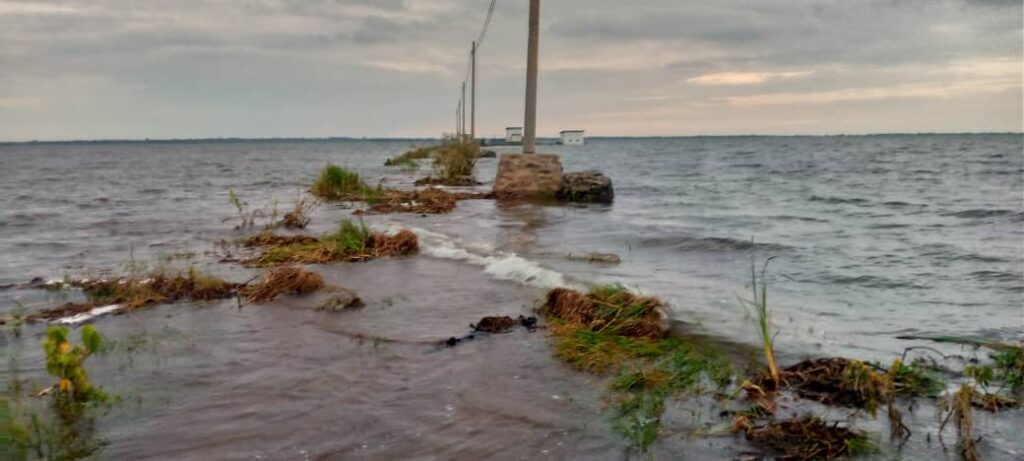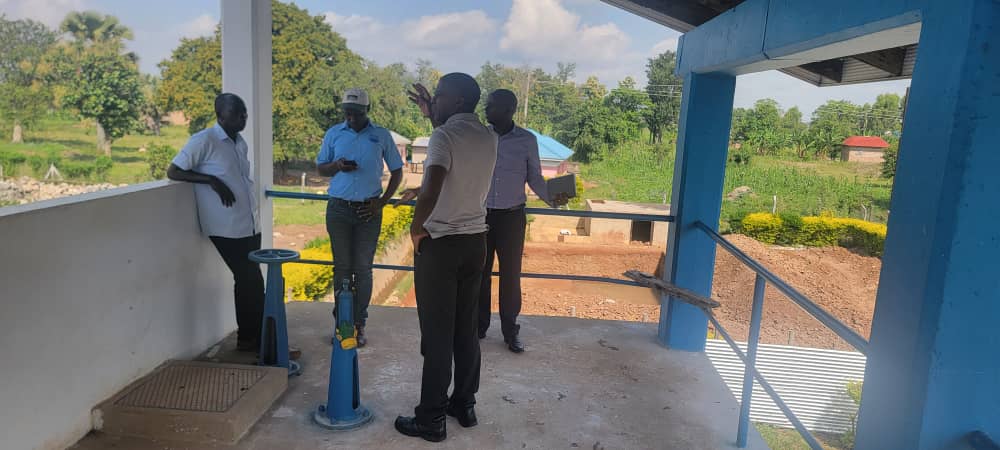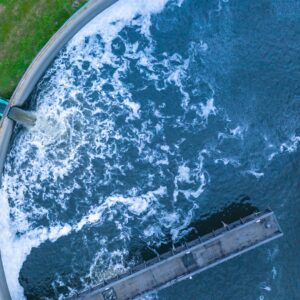
The recent resurgence of floods at Lake Kwania has inflicted severe disruptions and damage, compromising service delivery and displacing residents. The rising water levels have submerged the primary access road to the intake and caused significant structural damages. In June 2020, over 5,000 people were displaced when floods devastated their homes. Most recently, in April 2024, over 600 residents living on the shores of Lake Kwania were displaced, roads became impassable, and property was destroyed, including water production and supply infrastructure.
The National Water and Sewerage Corporation (NWSC) has suffered a great deal at the hands of the relentless floods which have led to continuous damage of the corporation’s infrastructure especially at Kachung Water Works. For instance; erosion at the bases of five power poles, cracks on the intake house floor, the collapse of island and road retaining walls, and intermittent blockage of the intake at the Water treatment plant, by floating islands. In response, several urgent measures and ongoing interventions have been undertaken to mitigate the impact and protect critical infrastructure.
On the bright side, repairs have been completed on the collapsed sections of the island and road retaining walls, and the intake house floor has been sealed to address the cracks. New retaining walls have been built to support the power poles, and procurement of a canal boat and life jackets is underway to enhance accessibility and safety. A wooden access bridge to the pump house has been constructed to improve access despite the challenging conditions.
On July 28-29, the NWSC Director of Regional Operations (SMOPs) for the Northern region, Eng. Dr. Charles Ekure, accompanied by Regional Engineer Charles Mushabe, visited the Lira offices to review operations and assess the flood impact at Kachung Water Works. The inspection team, including Lira Area Manager Gerezio Tukahirwa and Engineer Ssentaba Herbert, visited several critical sites to evaluate the situation firsthand.
The inspection covered various reservoirs and boosters, examining their operational capacity and assessing any damage sustained. At the sewer lift station, Tukahirwa briefed the team on the ongoing procurement of essential equipment such as windows, doors, pumps, and a standby generator. Additionally, the area has requested a power connection from UMEME to ensure reliable energy supply.
The inspection of Olweny Swamp revealed continuous failure of pedestals, prompting a commitment from SMOPS to support the construction of new pedestals. At the Kachung Intake, the team noted the flooding’s severe impact on intake structures and commended the ongoing efforts to protect the intake and ensure continuous production. They pledged further support and guidance to bolster these efforts.

Notably, heavy rains have caused Lake Kwania’s water levels to rise alarmingly, surpassing the highest levels recorded in 2020-2021. The intake is now accessible only by boat, and water has inundated parts of the intake island and the intake house up to the windows. Waves continue to exacerbate the situation, allowing water to enter the pump house and weakening the submerged wall. The erosion at the support bases of four additional power poles calls for urgent intervention.
More efforts to mitigate further damage and secure the infrastructure include; sealing leaks in the intake house floor and constructing gabion retaining walls to support the power poles. The reinstatement of collapsed parts of the intake and road retaining walls has also been prioritized, and a wooden access bridge to the pump house has been built to facilitate easier access despite the rising water levels.
Looking ahead, there are plans to construct a 100mm internal reinforced concrete wall to support the existing block wall and seal leakages in the pump house. Additional gabion retaining walls will be built to support the eroded bases of the power poles, and submersible pumps, already secured, will be installed outside the pump house. Also, a working platform will be constructed to aid in pump installation, and parts of the windows will be sealed to prevent water entry during strong waves.
Current activities aimed at addressing the flood’s impact and ensuring the integrity of the water infrastructure include the ongoing construction of a working platform for pump installations, which is 80% complete, and building gabion retaining walls for additional power poles, which is 30% complete.
NWSC’s commitment to excellent service delivery, and water for all, is second to none.



